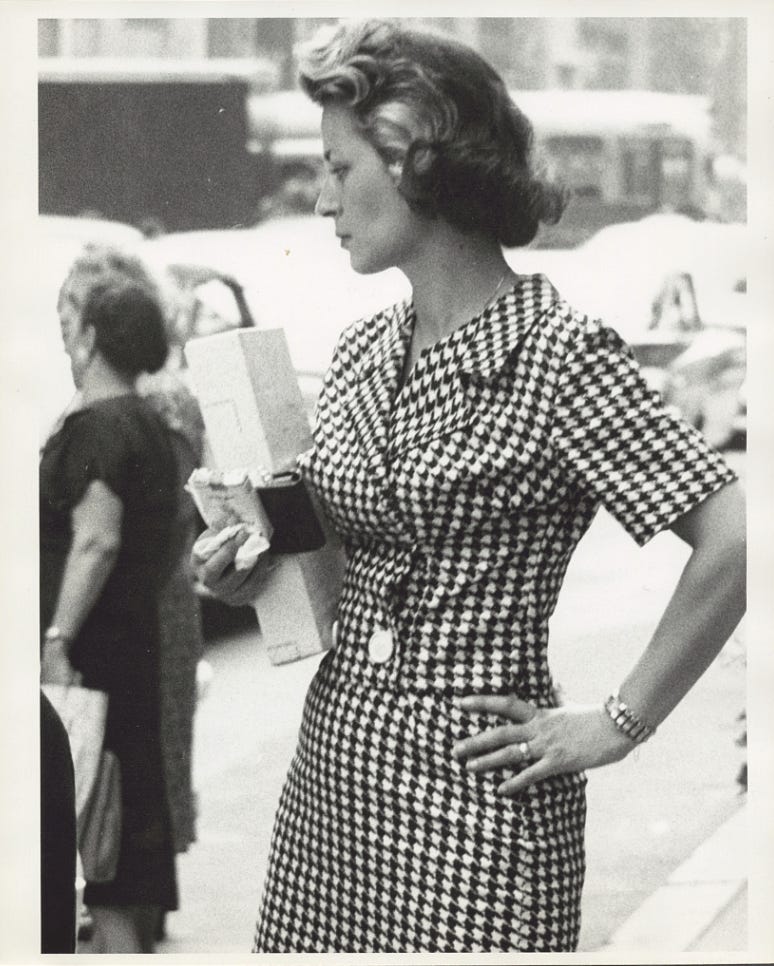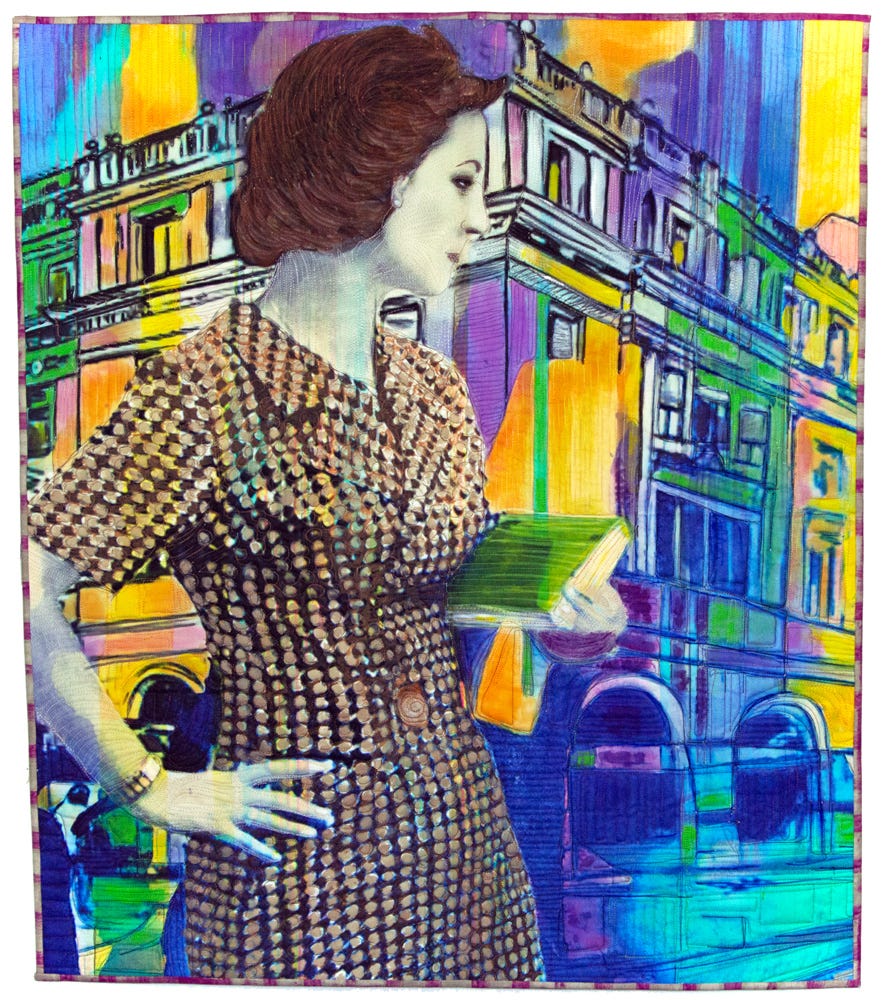Architect is the next in my series that begins with my dive into the Anthony Angel Collection . The collection is a huge trove of photographs taken by Angelo Ruizzuto. Anthony worked in New York City in the 1950’s and 60’s. Many of his photographs were taken at the beginning of the feminist revolution of the 1960’s at the time I was born. In many ways this series is a conversation with my mother and the mothers of my childhood friends.
Photograph of Angelo Ruizzuto
Growing up in the 60’s and 70’s was an interesting experience. The war in Vietnam was unpopular. Following the norms of the previous generation was uncool. By the summer of 1968 the rule breakers seemed to rule. My mother, born in the midwest in 1919, was not a rule breaker. She was an intelligent activist in non-partisan organizations like the League of Women voters but remained a Republican. The pace of change embraced by counterculture of the 1960’s genuinely scared her.
The dichotomy of my mother being forward thinking and against those who wanted to transform the society of the past, is interesting to me. I believe that the visuals of that era triggered her fear and the fears of others in her generation, as much as the substance. Wearing jeans with patched holes, long hair, tie dye shirts, etc; appalled my mother especially when my older sister wore this “hippie attire” to formal events.
When I found the unidentified woman in a houndstooth suit in the Library of Congress Collection, I thought about the importance placed on women to look the part as they entered the workforce. This was just as true two decades later in the 1980’s when I entered a corporate job.
The photo was taken in the same month and year I was born. Her outfit would be something my mother would describe as classic or an investment piece. The stories my mother had about buying expensive suites when she worked as an executive secretary in Chicago floated into my consciousness. I also smiled as I thought of how my mother made sure I had a couple of suits for job interviews. “Dress like the job you want even if its not the job they give you.”
Profile view of unidentified woman in houndstooth suit
Rizzuto, Angelo, 1906-1967, photographer 06/1959 [June 1959]
Library of Congress Control Number 2020636762
As I have been doing in this series using the Anthony Angel Collection, I invented a biography of the woman in houndstooth. She is an architect. One of only 320 registered architects in the United States. She is imagining what she will build after getting a job in a firm as she waits in the crosswalk heading to an interview.
Architecture as an organized profession began in 1857, but the history of building design is much longer and includes many pioneering women.
Plautilla Bricci was a 17th century architect and artist. She designed many chapels. The only woman artist of her day, she worked with her brother. She designed the third chapel on the left aisle in the Church of San Luigi dei Francesi, Rome and painted the altarpiece in this chapel.
Sara Losh was a 19th century English Architect. She and her sister inherited her father’s estate and never married. She was a brilliant and well educated woman who spoke several languages and could easily translate latin. Sara designed, funded and built several projects in and around her community of Wreay from the late 1820s onwards. She built schools and sunk wells. In 1840 she designed a new chapel in Wray. Her design was based on an early basilica. She described the design as early saxon or modified Lombard which influenced many others in both architecture and design.
Fay Kellog (1871- 1918) had to learn her trade with a German tutor from the Pratt Institute in Brooklyn. She was denied entry into formal education because of her gender. By the end of her life she would design hundreds of buildings in New York including the hall of records. She would be described as the most successful female architect in America.
In the 20th century there were famous architectural firms run by a married couples which had a huge impact on design. These included Maria Schwarz and Rudolf Schwarz who played a major role reconstructing the city of Cologne, especially its churches, after the Second World War.
Elizabeth Close could not get hired after graduation. She moved to Minneapolis and married William Close. Together they opened a firm in 1938. Elizabeth designed many private homes and ran the firm in her husband's absence during the Second World War. I love the quote about her by Jane Hesson, an Architectural Historian. "By her example she inspired many women in architecture, myself included, but she didn't want to be known as a woman architect – just as an architect who happened to be a woman."
I enjoy drawing in the style of an architect as a backdrop. The rules of basic perspective drawing are simple. Vertical lines don’t vanish and horizontal lines move toward a vanishing point. “Just remember these two simple instructions; horizontal lines head toward the point(s) and vertical lines are straight up and down.” I would repeat to my students opening the door for those learning to draw. The unit on perspective was very popular with my middle schoolers, particularly boys; who love to know how to succeed at a fast pace.
So when I saw this woman in houndstooth and decided that she was an architect; it was fun to add some very loose perspective drawing in the background. Unlike those Middle school boys, I’m not a huge fan of the ruler. For this drawing like any drawing of a building’s exterior, I tend to draw a few basic vanishing lines a few basic verticals and then just scribble in from there.
The colors splashed over these black lines were created initially on the small drawing I use for the larger print on fabric, with liquid watercolors. That sketch was pure play. It was intuitive and not particularly planned. I think that is what the creative process is about; intuition and play. The more you play as an artist the better your intuition becomes.
The design consideration I had had to face was how to separate the figure from the background in a way that alluded to the character and her imaginary space.
The original photo was of the woman at the crosswalk, waiting with a pack of cigarettes and a purchase of some kind. She was looking down. In the process of design, I eliminated the pack of cigarettes (Not a fan of smoking!) and added what I thought of as her “Sketchbook”. The figures' neutral colors of tan and black checks create a bold regular pattern in contrast to a loose and colorful backdrop.
This future architect, which I will name Liz in honor of Elizabeth Close; mimics the style of professional man in order to get the job. Inside she allows herself to be more creative and far less formal. She is imagining a world beyond the structures of perspective drawings she will produce during the work hours. It’s a world she hopes to build someday.
“The only way for a woman, as for a man, to find herself, to know herself as a person, is by creative work of her own. “ Betty Friedan
The only way, as Betty Friedan has said; to find yourself as a woman is through your own work. It is through something that you have created for yourself. Not for your husband. Not for your children. Not for your church or your larger community. In other words, not in service of something or someone else's' vision. To know yourself you have to create something of your own.
And until next time,
Margaret.







